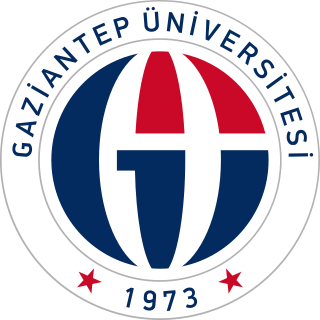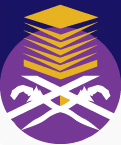Related Research Articles

Computer science is the study of computation, information, and automation. Computer science spans theoretical disciplines to applied disciplines. Though more often considered an academic discipline, computer science is closely related to computer programming.

Hydrology is the scientific study of the movement, distribution, and management of water on Earth and other planets, including the water cycle, water resources, and drainage basin sustainability. A practitioner of hydrology is called a hydrologist. Hydrologists are scientists studying earth or environmental science, civil or environmental engineering, and physical geography. Using various analytical methods and scientific techniques, they collect and analyze data to help solve water related problems such as environmental preservation, natural disasters, and water management.
Computational archaeology describes computer-based analytical methods for the study of long-term human behaviour and behavioural evolution. As with other sub-disciplines that have prefixed 'computational' to their name, the term is reserved for methods that could not realistically be performed without the aid of a computer.

The following outline is provided as an overview of and topical guide to academic disciplines:

Theoretical computer science (TCS) is a subset of general computer science and mathematics that focuses on mathematical aspects of computer science such as the theory of computation, formal language theory, the lambda calculus and type theory.
Computational science, also known as scientific computing, technical computing or scientific computation (SC), is a division of science that uses advanced computing capabilities to understand and solve complex physical problems. This includes

Gaziantep University is a public university in Gaziantep, Turkey. Gaziantep University is one of the best universities in Turkey. It has 20 faculties with a strong emphasis on scientific and technological research.
The International Association for Hydro-Environment Engineering and Research (IAHR), founded in 1935, is a worldwide, non-profit, independent organisation of engineers and water specialists working in fields related to the hydro-environment and in particular with reference to hydraulics and its practical application. IAHR was called the International Association of Hydraulic Engineering and Research until 2009.

The Research Institute for Advanced Computer Science (RIACS) was founded June 1, 1983 as a joint collaboration between the Universities Space Research Association (USRA) and the NASA Ames Research Center. The Institute was created to conduct basic and applied research in computer science, covering a broad range of research topics of interest to the aerospace community including supercomputing, computational fluid dynamics, computational chemistry, high performance networking, and artificial intelligence.

A hydrologic model is a simplification of a real-world system that aids in understanding, predicting, and managing water resources. Both the flow and quality of water are commonly studied using hydrologic models.
The International Association of Hydrological Sciences (IAHS) is a non-profit, non-governmental scientific organization committed to serving the science of hydrology and the worldwide community of hydrologists. The IAHS was established in 1922, and presently claims a membership in excess of 9,000 with members in over 150 countries.
The term Engineering Informatics may be related to information engineering, computer engineering, or computational engineering, among other meanings. This word is used with different context in different countries. In general, some people assume that the central area of interest in informatics is information processing within man-made artificial (engineering) systems, called also computational or computer systems. The focus on artificial systems separates informatics from psychology and cognitive science, which focus on information processing within natural systems. However, nowadays these fields have areas where they overlap, e.g. in field of affective computing.
The following outline is provided as an overview of and topical guide to hydrology:
Informatics is the study of computational systems. According to the ACM Europe Council and Informatics Europe, informatics is synonymous with computer science and computing as a profession, in which the central notion is transformation of information. In some cases, the term "informatics" may also be used with different meanings, e.g. in the context of social computing, or in context of library science.
In hydrology, routing is a technique used to predict the changes in shape of a hydrograph as water moves through a river channel or a reservoir. In flood forecasting, hydrologists may want to know how a short burst of intense rain in an area upstream of a city will change as it reaches the city. Routing can be used to determine whether the pulse of rain reaches the city as a deluge or a trickle.

UiTM Faculty of Civil Engineering is one of the professional graduate faculty of UiTM located in Shah Alam, Malaysia.
This glossary of artificial intelligence is a list of definitions of terms and concepts relevant to the study of artificial intelligence, its sub-disciplines, and related fields. Related glossaries include Glossary of computer science, Glossary of robotics, and Glossary of machine vision.
Data-driven models are a class of computational models that primarily rely on historical data collected throughout a system's or process' lifetime to establish relationships between input, internal, and output variables. Commonly found in numerous articles and publications, data-driven models have evolved from earlier statistical models, overcoming limitations posed by strict assumptions about probability distributions. These models have gained prominence across various fields, particularly in the era of big data, artificial intelligence, and machine learning, where they offer valuable insights and predictions based on the available data.

Ezio Todini is an Italian academic, hydrologist and civil engineer.
References
- ↑ "IWA Publishing - Journal of Hydroinformatics". Archived from the original on 2015-10-21. Retrieved 2005-01-30.
- ↑ "International Association for Hydro-Environment Engineering and Research". Archived from the original on 2019-09-23. Retrieved 2017-12-21.
- ↑ "IWA HomePage". Archived from the original on 2019-07-31. Retrieved 2017-12-21.
- ↑ IAHS-AISH